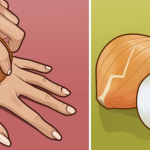In the pursuit of better health, mental clarity, and stress reduction, people are exploring simple but effective breathing techniques. One such practice involves touching your tongue to the roof of your mouth while breathing. Though this technique may seem small, it can enhance focus and relaxation, with roots in traditional practices like yoga and qigong.
The Science Behind Tongue Placement and Breathing
Breathing is something we do automatically, but using specific techniques can transform it into a tool for managing stress and improving well-being. Placing your tongue on the roof of your mouth while breathing is a technique used in certain Eastern traditions. It is often linked with the concept of connecting energy pathways in the body, but the benefits of this technique can be explained more through modern science.
Nasal Breathing Support
Touching the tongue to the roof of your mouth encourages nasal breathing, which has many benefits over mouth breathing. Nasal breathing helps filter, humidify, and warm the air before it reaches your lungs, which can make breathing more efficient and reduce strain. It also activates the diaphragm, leading to deeper, slower breaths that are associated with calming the nervous system.
Focus on Breath Control
By positioning the tongue in this way, you naturally bring more awareness to your breathing, which enhances mindfulness. This mindful breathing can help clear mental clutter and increase focus, making it a useful tool for meditation or when trying to concentrate on specific tasks.
Step-by-Step Guide to the Technique
To practice this breathing technique:
- Find a Comfortable Position: Sit or lie down in a relaxed posture, keeping your spine straight but not tense.
- Close Your Mouth and Relax Your Jaw: Gently close your mouth, and let your tongue rest against the roof of your mouth, just behind your front teeth.
- Breathe in Slowly Through Your Nose: Take deep, slow breaths, inhaling for about 4–6 seconds.
- Hold the Breath: Hold for 4–6 seconds, or as long as comfortable.
- Exhale Slowly: Breathe out slowly through your nose for 6–8 seconds, releasing any tension.
- Repeat: Continue this breathing cycle for 5–10 minutes.
Benefits of This Breathing Technique
- Stress Reduction One of the immediate benefits of mindful breathing is stress relief. Breathing deeply and slowly can reduce cortisol levels (the stress hormone), promoting a sense of calm. This practice helps activate the parasympathetic nervous system, which is responsible for the “rest and digest” response, countering feelings of stress and anxiety.
- Improved Focus and Mental Clarity By focusing on your breath, you can improve concentration and mental clarity. Deep breathing increases oxygen flow to the brain, supporting better cognitive function. This technique is often used before tasks requiring focus, such as studying or presentations.
- Better Sleep Practicing this breathing technique before bed may help prepare your body for restful sleep. By calming the nervous system, it reduces a racing mind and encourages relaxation, which can be helpful for those struggling with insomnia or restlessness.
- Enhanced Respiratory Efficiency Encouraging nasal breathing, this technique can support better lung function and oxygen exchange. Nasal breathing promotes the production of nitric oxide, a molecule that helps dilate blood vessels and improve oxygen circulation in the body, leading to increased energy and reduced fatigue.
- Emotional Regulation Focusing on controlled breathing can help regulate emotions by creating a calming rhythm. This can reduce feelings of frustration or overwhelm, contributing to emotional stability.
Conclusion
While placing your tongue on the roof of your mouth during breathing may seem like a minor adjustment, it can support mindful breathing practices that enhance relaxation, focus, and overall well-being. However, it’s important to note that while this technique can help manage stress and improve mental clarity, it should not be seen as a cure or substitute for medical treatment for health conditions. Combining this technique with a balanced lifestyle and medical advice can optimize both mental and physical health.

